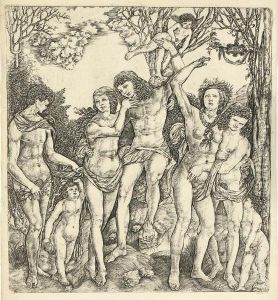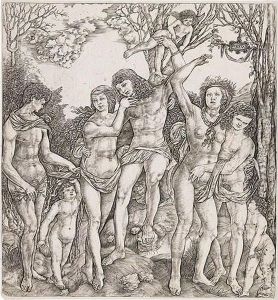Cristofano Robetta Paintings
Cristofano Robetta was an Italian engraver and painter, born in 1462 in Florence, Italy, and passed away in 1535. His life and work occurred during the High Renaissance, a period known for its significant cultural and artistic achievements. Robetta is most famous for his engravings, which exhibit the influence of the Florentine school, notably the works of Sandro Botticelli and Filippino Lippi. Despite being less renowned than his contemporaries, Robetta contributed valuably to the art of engraving in Italy, showcasing both technical skill and creative prowess.
Robetta's oeuvre mainly consists of engravings, though he is also known to have painted, albeit with less frequency and visibility than his engravings. His works often depicted religious scenes, mythological narratives, and allegories, imbued with the graceful lines and expressiveness characteristic of the Renaissance. He was adept at translating the complex compositions and themes of Renaissance paintings into the medium of engraving, thus making these themes more accessible to a broader audience.
Throughout his career, Robetta's style evolved, reflecting the artistic developments of his time. Early in his career, his engravings closely mirrored the elegance and detailed line work of Botticelli, while his later works exhibited a greater sense of depth and volume, indicating the influence of the emerging High Renaissance ideals. Despite the high quality of his work, Robetta did not achieve the same level of fame as some of his contemporaries. However, his contributions to the art of engraving remain significant, as he helped to further the technique and expressive potential of the medium.
Robetta's works are held in various art collections and museums around the world, where they continue to be studied and appreciated for their craftsmanship and place within the broader context of Renaissance art. His legacy, while modest in comparison to the giants of the Renaissance, remains important for understanding the development of engraving as a vital form of artistic expression during this period.








